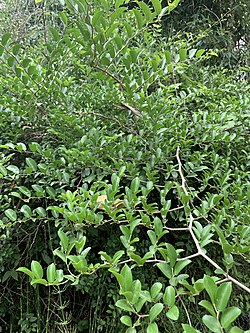| Celtis iguanaea | |
|---|---|
 | |
| Scientific classification | |
| Kingdom: | Plantae |
| Clade: | Tracheophytes |
| Clade: | Angiosperms |
| Clade: | Eudicots |
| Clade: | Rosids |
| Order: | Rosales |
| Family: | Cannabaceae |
| Genus: | Celtis |
| Species: | C. iguanaea |
| Binomial name | |
| Celtis iguanaea | |
| Synonyms [2] | |
List
| |
Celtis iguanaea, the iguana hackberry, is a deciduous tree in the genus Celtis .
The species is found in the United States (Florida), Central America, the Caribbean, and South America.
